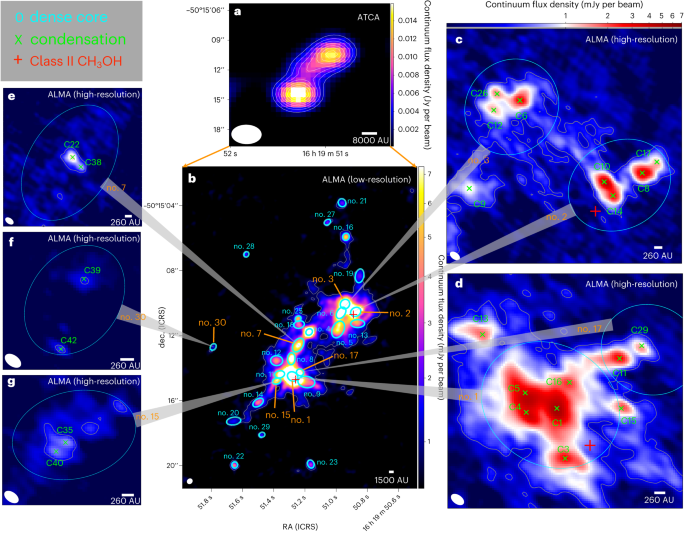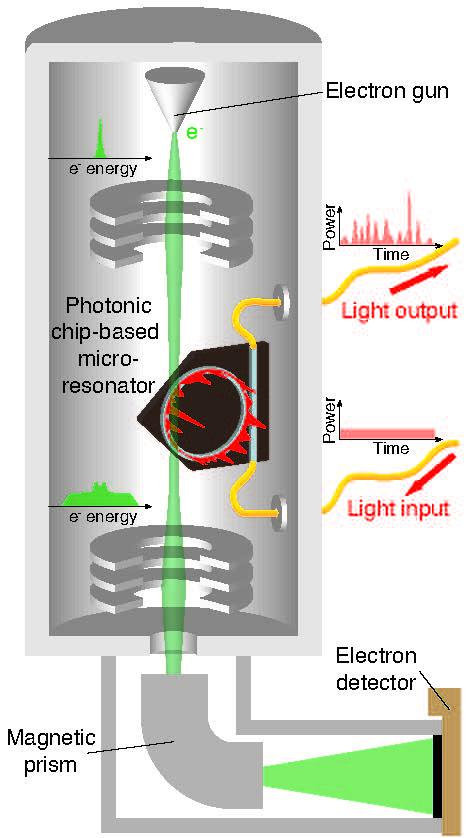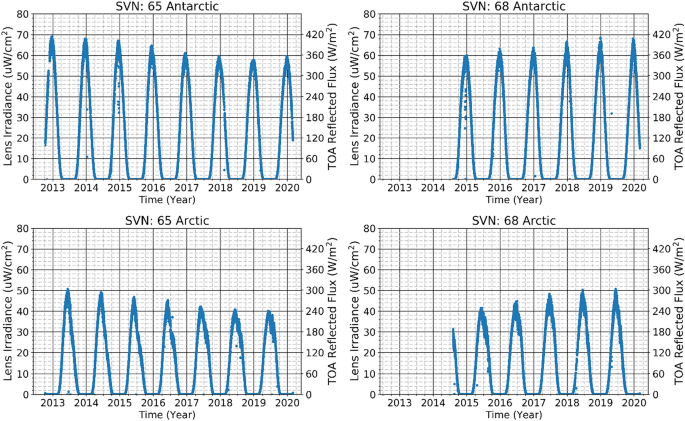2024-01-15 マックス・プランク研究所
◆これにより、将来的な星間爆発や時空の振動などに対する理解が深まる可能性がある。
<関連情報>
- https://www.mpg.de/21352437/0110-astr-twins-triplets-quadruplets-and-more-observations-show-massive-stars-are-indeed-born-as-multiples-150980-x
- https://www.nature.com/articles/s41550-023-02181-9
高質量星プロトクラスターにおける高次多重性の観測 Observations of high-order multiplicity in a high-mass stellar protocluster
Shanghuo Li,Patricio Sanhueza,Henrik Beuther,Huei-Ru Vivien Chen,Rolf Kuiper,Fernando A. Olguin,Ralph E. Pudritz,Ian W. Stephens,Qizhou Zhang,Fumitaka Nakamura,Xing Lu,Rajika L. Kuruwita,Takeshi Sakai,Thomas Henning,Kotomi Taniguchi & Fei Li
Nature Astronomy Published:15 January 2024
DOI:https://doi.org/10.1038/s41550-023-02181-9

Abstract
The dominant mechanism forming multiple stellar systems in the high-mass regime (M* ≳ 8 M⊙) remained unknown because direct imaging of multiple protostellar systems at early phases of high-mass star formation is very challenging. High-mass stars are expected to form in clustered environments containing binaries and higher-order multiplicity systems. So far only a few high-mass protobinary systems, and no definitive higher-order multiples, have been detected. Here we report the discovery of one quintuple, one quadruple, one triple and four binary protostellar systems simultaneously forming in a single high-mass protocluster, G333.23–0.06, using Atacama Large Millimeter/submillimeter Array high-resolution observations. We present a new example of a group of gravitationally bound binary and higher-order multiples during their early formation phases in a protocluster. This provides the clearest direct measurement of the initial configuration of primordial high-order multiple systems, with implications for the in situ multiplicity and its origin. We find that the binary and higher-order multiple systems, and their parent cores, show no obvious sign of disk-like kinematic structure. We conclude that the observed fragmentation into binary and higher-order multiple systems can be explained by core fragmentation, indicating its crucial role in establishing the multiplicity during high-mass star cluster formation.



